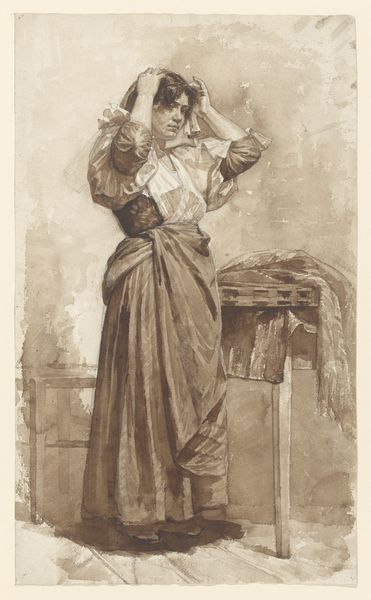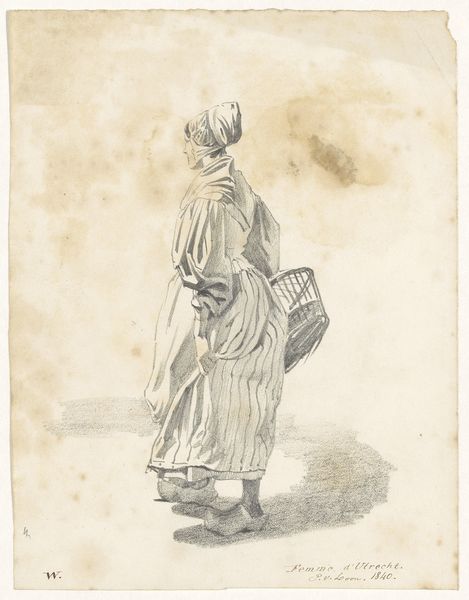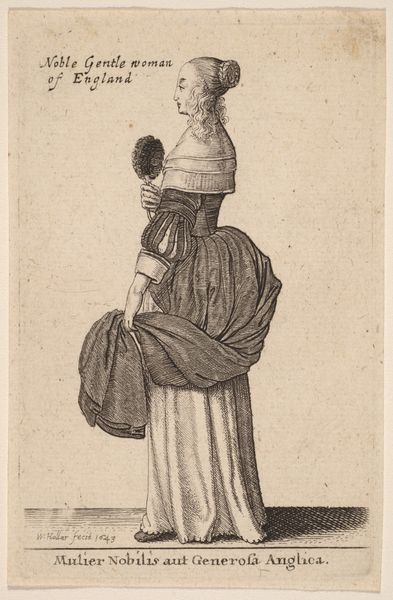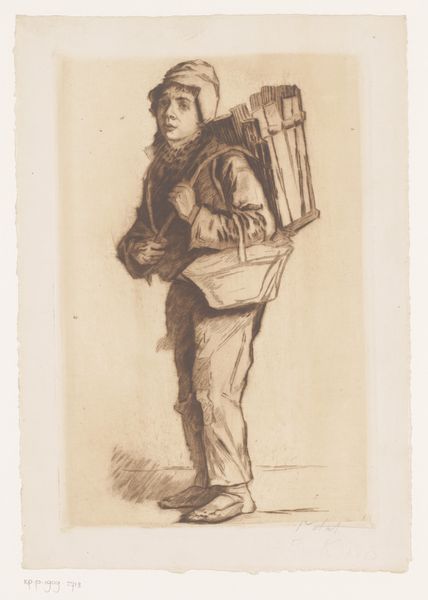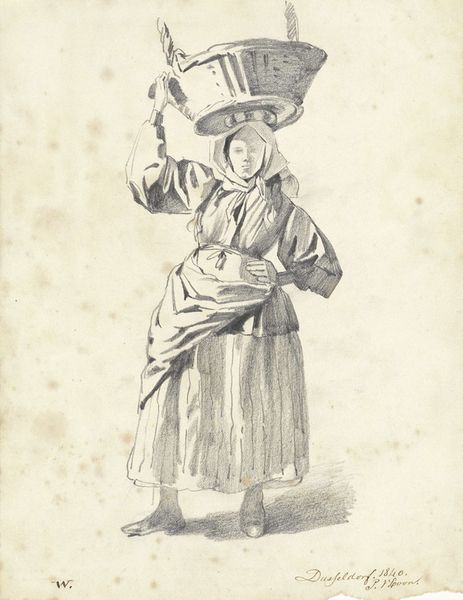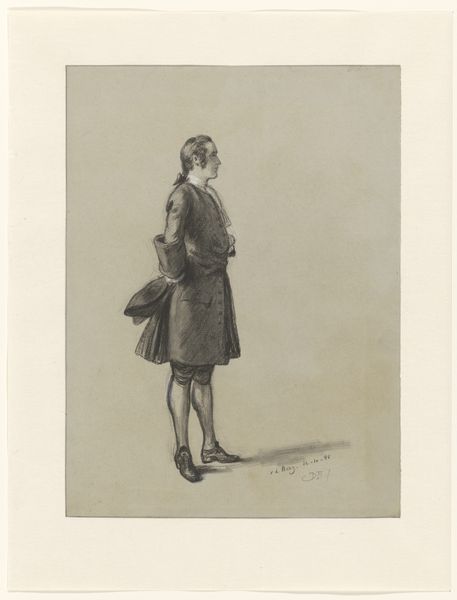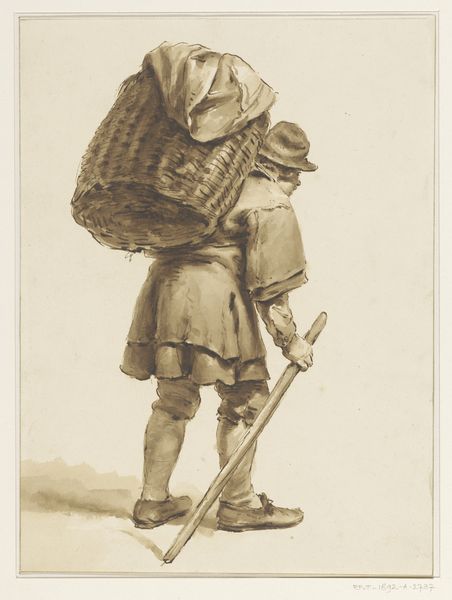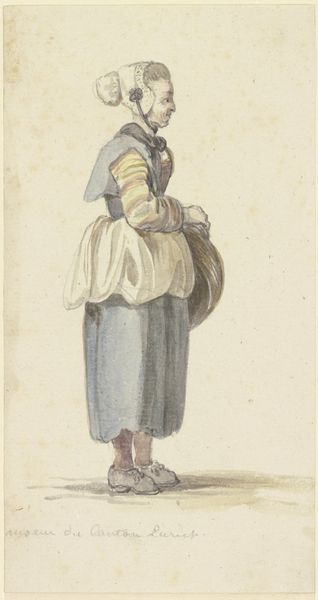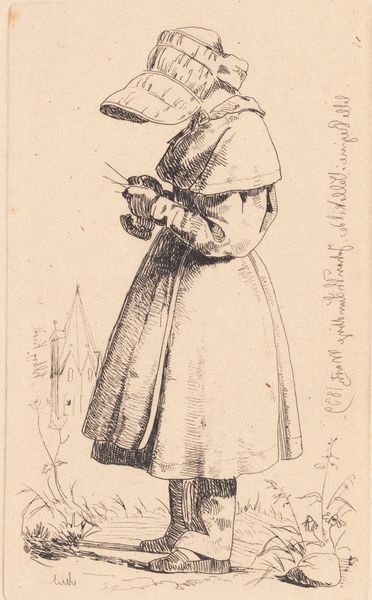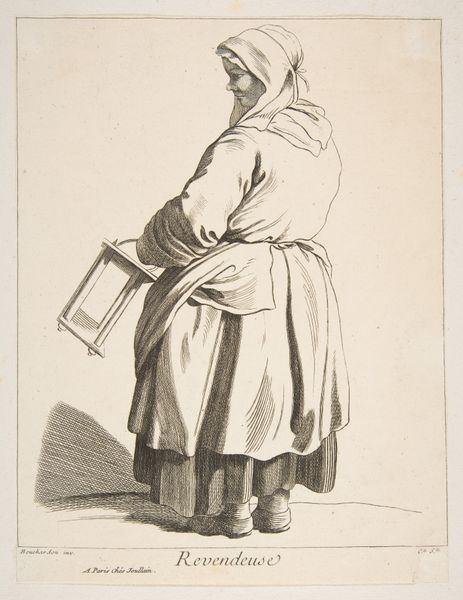
drawing, paper, ink
#
portrait
#
drawing
#
paper
#
ink
#
romanticism
#
genre-painting
Dimensions: height 266 mm, width 184 mm
Copyright: Rijks Museum: Open Domain
Editor: This is "Standing Girl with Hat in Hand" by Pieter Christoffel Wonder, made sometime between 1790 and 1852, using ink on paper. The subject has a downcast gaze, and the ink drawing medium feels almost like a shadow, making me think of social status or perhaps the burden of labor. What do you see here? Curator: As a materialist, I see more than just a pretty drawing. Consider the process: ink on paper. These materials were relatively accessible, enabling the creation of images portraying everyday life beyond the elite. Notice how the artist renders the details of the clothing – simple fabrics, practical shoes. These are not the garments of the aristocracy but signal a working-class existence. Editor: So you are saying that the *choice* of materials points to a social context? Curator: Exactly. Ink allowed for multiples and widespread circulation. This connects directly to the rising middle class and a demand for relatable imagery, challenging the established patronage system centered on the wealthy. Wonder's technique of delicate shading, with all its artistic intention, in this context it highlights, if subtly, a kind of working-class dignity, but even its quiet presentation has revolutionary undertones. Editor: It’s interesting to think about how the *reproducibility* of the work itself has a social impact, almost as important as the subject matter itself! Curator: Indeed. How art is produced and consumed profoundly affects our understanding of the world. We learn about the labour class of the era, even their romantic depiction is telling about their reality, and sometimes about ours. Editor: I see that now! I learned so much. Thanks. Curator: My pleasure. It's crucial to examine these connections to understand any artwork fully.
Comments
No comments
Be the first to comment and join the conversation on the ultimate creative platform.
